A peak into the archive of MVRDV: an innovative exhibition at Het Nieuwe Instituut
A new multi-media exhibition at Het Nieuwe Instituut in Rotterdam explores the possibilities of presenting an archive in a lively and active manner. This takes place in an office space on the sixth floor in which architectural models and objects of MVRDV are on display.
On the 6th of November, a new exhibition opened in Het Nieuwe Instituut about architectural firm MVRDV, called MVRDVHNI: The Living Archive of a Studio. MVRDV is an acronym for the founders of the firm: Winy Maas, Jacob van Rijs and Nathalie de Vries. Since the founding of the firm in 1993, MVRDV has grown nationally and internationally, and operates at the intersection of architecture and urban design. MVRDV is known for their experimental architecture, such as the Markthal in Rotterdam, the EXPO 2000 Pavilion in Hannover as well as their most recent creation: the new storage facility of the Museum Boijmans van Beuningen.
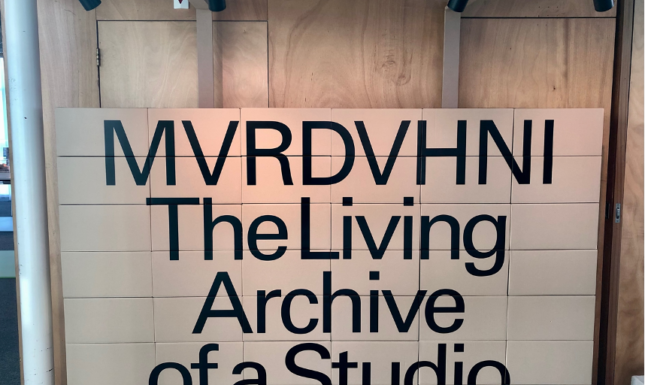
Het Nieuwe Instituut – the national heritage institution for architecture, design, and digital culture – has started acquiring the MVRDV archive since 2015. The MVRDVHNI exhibition translates the archival objects and working methods of both MVRDV and Het Nieuwe Institituut for the public. Through the presentation of archival material – from sketches to models to correspondences - the visitor gains insight into the design process of MVRDV. In addition, the exhibition shows how Het Nieuwe Instituut manages the archive and how it even creates a digital archive.
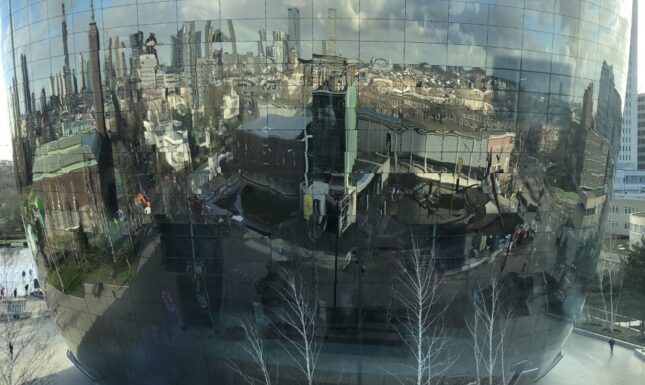
The body of the exhibition is divided into three themes; Green, Human and Dream, in which models and images of MVRDV are displayed. The models vary in size, color, material, and construction, to create spectacular effects. This is where the office setting of MVRDV is most visible, because of the desks, typical desk lamps and computers. Many visitors react surprised to the models, from “I didn’t know this building is in Amsterdam!” or “did they really build this?”. The dialogue between MVRDV and Het Nieuwe Instituut is also expressed, through the presentation of various archival and research material, on wooden trolleys and cardboard boxes.
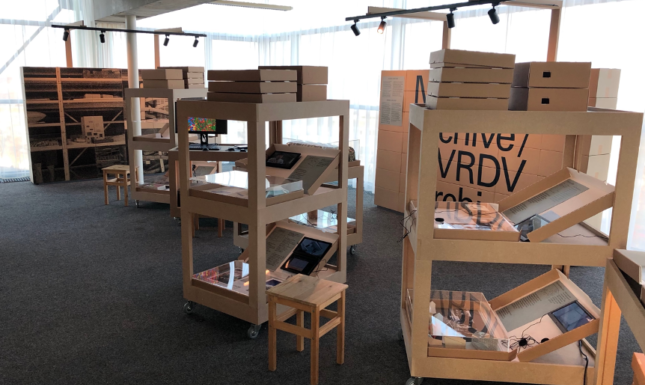
The body of the exhibition is divided into three themes; Green, Human and Dream, in which models and images of MVRDV are displayed. The models vary in size, color, material, and construction, to create spectacular effects. This is where the office setting of MVRDV is most visible, because of the desks, typical desk lamps and computers. Many visitors react surprised to the models, from “I didn’t know this building is in Amsterdam!” or “did they really build this?”. The dialogue between MVRDV and Het Nieuwe Instituut is also expressed, through the presentation of various archival and research material, on wooden trolleys and cardboard boxes.
The interaction of the visitor has a central place in the final room of the exhibition, which has a spectacular view of the new Boijmans depot. Six artists have been invited by Het Nieuwe Instituut to develop a tool that allows the digital archive to be searched and visualized. For example, a special video game has been developed to explore the archive, and a VR-installation immerses the viewer in a MVRDV-city.
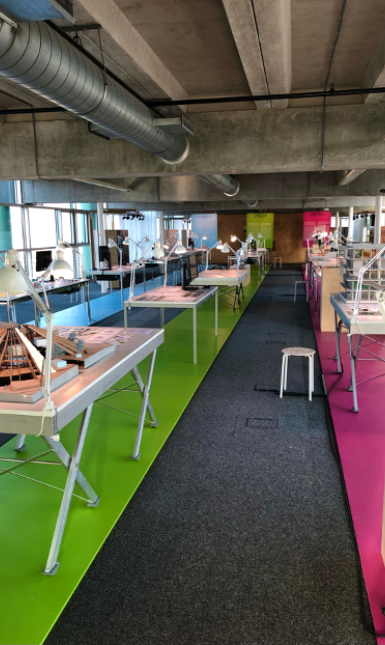
As a Production intern, I was very involved in this project, and I contributed to the actual realization of the exhibition. I saw how important the dialogue between MVRDV and Het Nieuwe Instituut was, as well as the dialogue between knowledge and practice, and between archive and exhibition. The archival theme was innovative for me, how to research, handle, and exhibit archival material, to make it accessible and interactive for a wider audience. Archival material is often stored away in the depot and not visible to the public, however, this material is foregrounded in the exhibition. Moreover, the exhibition also presents the working methods of both MVRDV as an architectural firm and Het Nieuwe Instituut as museum and research institute. Therefore, the exhibition makes invisible materials and practices visible to the public.
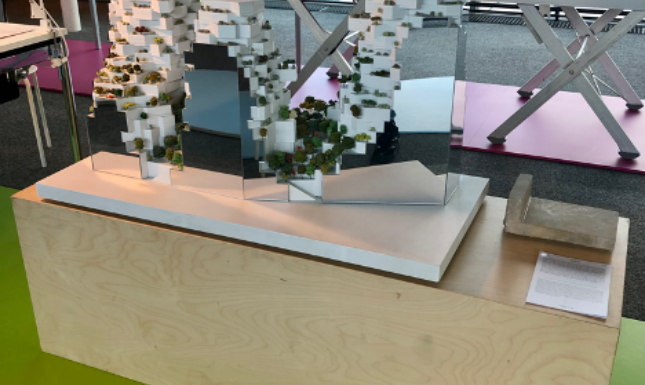
Moreover, what is very interesting is the exhibition structure and lay-out. The exhibition challenges what comes to mind when you think of museums and exhibitions. The content is not presented in a museum setting, on the contrary, the lay-out is based on the office setting, to match the theme of the exhibition. Het Nieuwe Instituut is challenging in this regard, with an exhibition that pushes the boundaries of what exhibitions can do and look like. Therefore, the exhibition itself can be seen as a conceptual artwork.
For more information about the exhibition, visit this page.
Amber van As is a third-year Arts, Media and Society student at Leiden University. Until mid-January, she is doing an internship at Het Nieuwe Instituut in Rotterdam as part of her minor. She is interested in museology, especially curatorial practices, and current social issues such as sustainability.


0 Comments